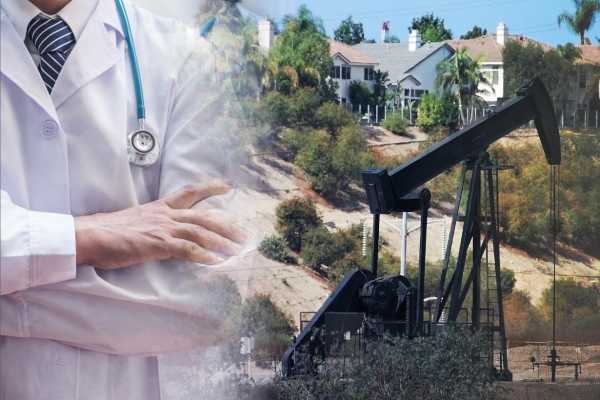[ad_1]
Although it’s a well-known fact that the US is the world’s largest oil producer, many presumed Texas and other southern states would be the place to go, since WTI Futures actually stands for West Texas Intermediate.
Hiding in Plain Sight
However, Los Angeles, California, the renowned city is littered with oil and gas facilities – over 800 within the city limits and over 4,000 in the county area. Fossil fuels and the city of angels go back a long way, rich underground deposits led to a “black gold rush” at the turn of the 20th century. In the 1960s, an influx in population prompted the beautification of oil and gas facilities, allowing drilling and relevant operations to carry on without tainting the skyline.
Over the years, similar facades have been unmasked – including an episode of BBC’s Sherlock depicting a fake house to cover London’s underground railway network. If you happen to own a house next to such facilities, there is a chance for a windfall income as oil companies have to pay for their (mostly underground) pipelines passing through other’s properties.
More Give Than Take
But other than being points of (mild) interest, these facilities actually present considerable health risks.
Sadly, The existing emission standards only accounted for workers on-site, not geared towards inhabitants who are exposed for a longer time. Reports from different neighborhoods in LA claimed health problems among their residents, including respiratory issues and cancer – which could be connected to harmful substances (e.g. hydrogen sulfite and carcinogens) released by said facilities.
In the case of closed or abandoned facilities, potential leaks are an even greater threat to local communities, as they could pollute the air, soil, and water with no responsible party to be held accountable for. Some relatively affluent neighborhoods have enclosed structures to contain these facilities, while those with lower income groups are yet to receive the same treatment. Setting up a buffer zone would be a sensible solution on paper, but less viable in places that are already densely populated.
Good Riddance?
In January 2022, the LA City Council banned future oil and gas projects in the city, while phasing out existing ones. The decision was celebrated by the afflicted communities, but also immediately drew ire from oil and gas companies, claiming an immediate ban would hamper the industry and the nation’s energy production.
As of 23 September, WTI Futures are further down to $82.91 a barrel. From the surface, the energy crisis has subsided. On the flip side, talks with oil-producing nations under US sanctions are still going nowhere, winter is expected to aggravate the energy crunch. Maybe it’s time to build a buffer (in terms of energy portfolio and stockpile), just as oil companies should have decades ago. Check the latest oil price here.
[ad_2]
Source link








